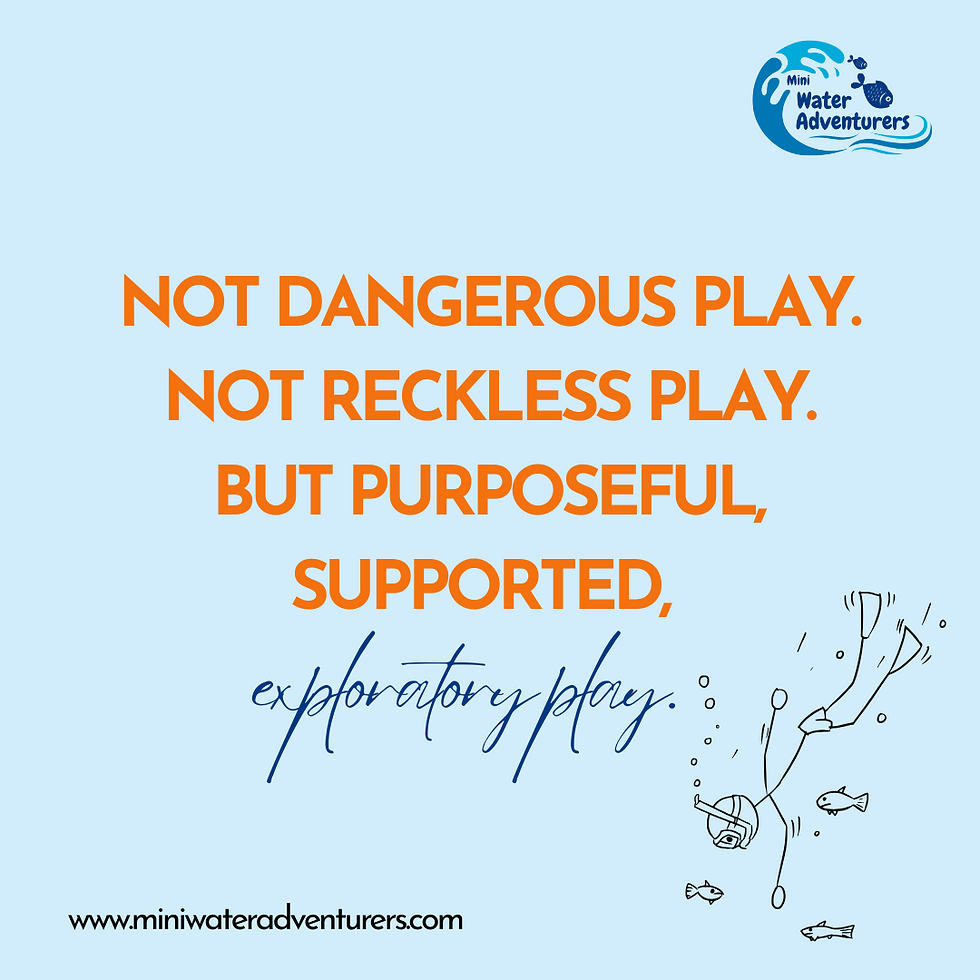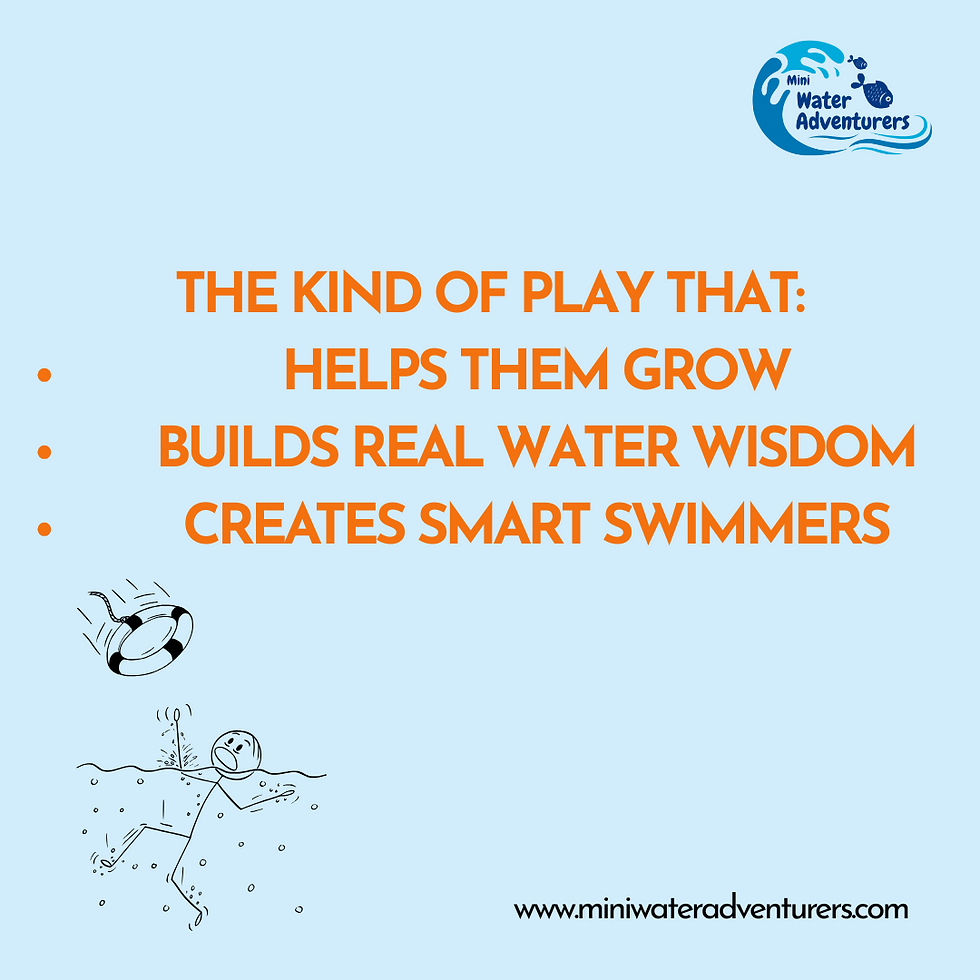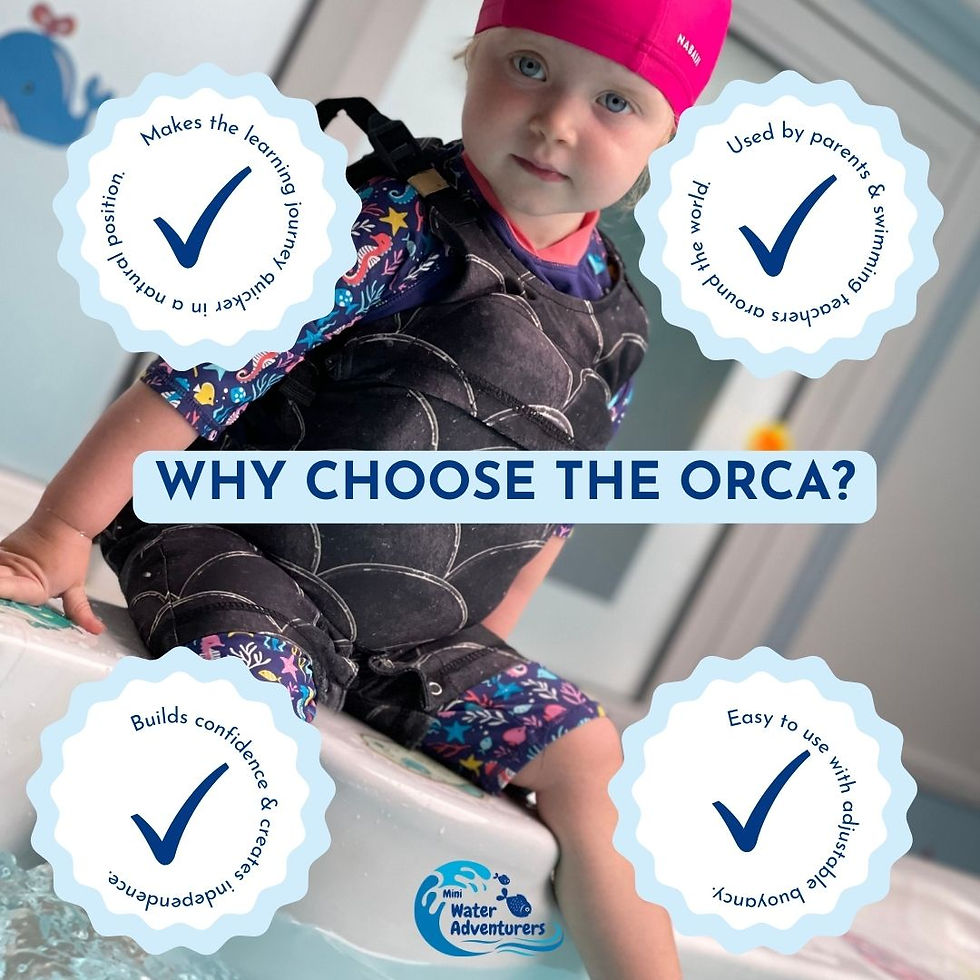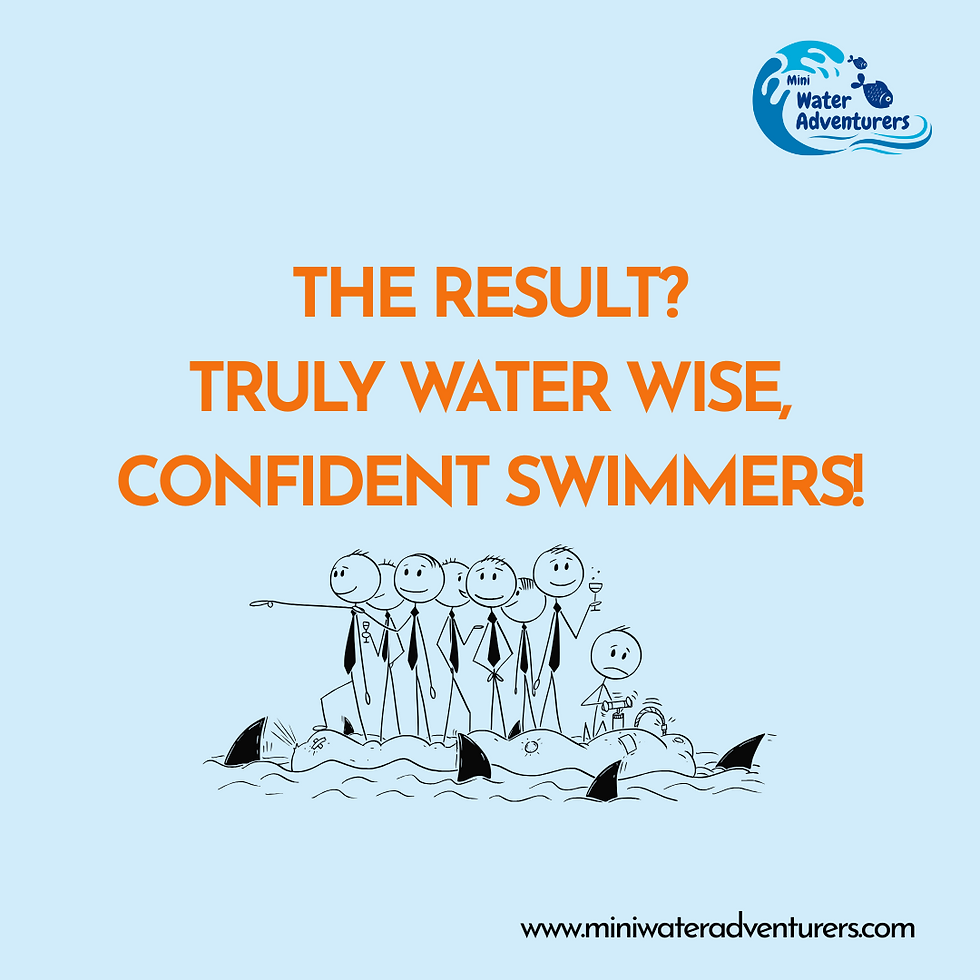Stop whistling at the splash: Why exploratory play deserves a place in the learn-to-swim world
- Helen Hughes
- Aug 4
- 4 min read

If you’ve ever dared to mention the word risk poolside, you’ll have seen the ripple effect immediately.
Supervisors flinch. Lifeguards tighten their grip on their whistles. Safety officers hold their breath. Poolside signage screams “NO JUMPING. NO DIVING. NO SPLASHING. NO FUN.” All in the name of health and safety.
And while yes — safety is critical — what’s being missed in all of this is a fundamental truth:
Children learn best through exploration. And in the water, they learn through risky, sensory, curious play.
Not dangerous play. Not reckless play. But purposeful, supported, exploratory play.
The kind that helps them grow. The kind that builds real water wisdom. The kind that creates SMART swimmers: Self-aware, Mastery of movement, Anticipation skills, Respect for water, and Trust in ability.

Why Risk is Vital for Learning
Water is inherently risky. And instead of preparing children to respond to that risk, traditional swimming lessons have often focused on rigid safety-first routines and control-based teaching. The result? Children can perform strokes on cue but freeze when something unexpected happens — like falling in sideways, or being splashed in the face mid-stroke.
Real safety doesn’t come from strict routines. It comes from understanding, adapting, and reacting with confidence.
Children need time and space to:
Lose balance and recover
Push off at different angles
Work out how floats move, spin, and tip
Experience falling in — and climbing out
Feel what it's like to jump, land, roll, and breathe again
And this doesn’t happen in straight lines. It happens in the messy, magnificent world of exploratory play.

Exploratory Play Is Not Just Play — It’s Purposeful
There’s a dangerous misconception that play is a time-filler. Something to do before the "real learning" starts.
But here’s the truth:
Exploratory play is a blend of skill development and water safety awareness, seamlessly knitted together.
It’s not either/or — it’s both.
Children playing with floats learn balance and buoyancy.Children jumping in again and again learn breath control, surfacing, and confidence.Children diving under for toys develop propulsion, coordination, and spatial awareness.Children wobbling, tipping, and recovering build self-regulation and resilience.
Each of these is a learning moment in disguise.
And the best part? It sticks.Because it’s experiential. Because it’s felt in their bodies. Because it’s joyful.
What About the Tick Sheets? The Prescriptive Programmes?
Now, let’s talk about the other challenge facing swim teachers: the skill lists, the progress trackers, the “must-do” checklists that dominate most learn-to-swim programmes.
You know the ones:
“Kick for 5 metres with a float”
“Push and glide with arms extended”
“Submerge face for 3 seconds”
“Swim 10 metres unaided”
These lists form the foundation of progress in many swim schools. And for standardisation and large-scale delivery, they serve a purpose.
But here's the hard truth:
These lists don’t look your swimmers in the eye. You do.
And when you’ve got:
A timid preschooler clinging to you, terrified of letting go
A fearless child launching themselves in every direction
A neurodivergent swimmer processing everything differently
A cautious child who wants to try — but needs just a bit more time
… it becomes painfully clear that teaching by tick-box is like trying to put every child into the same swimsuit — and expecting it to fit.
We understand why these frameworks exist. But when they override responsiveness, exploration, and child-led discovery — they become a barrier, not a guide.

There Is a Better Way
And it begins by trusting the teacher’s intuition. By designing lessons with purpose, not pressure. By recognising that when skills and safety are taught through play, they are learned more deeply — and retained more fully.
Here’s how it works:
✅ Carefully Constructed Lessons
Exploration isn’t chaotic — it’s intentional.Plan lessons with layered challenges, movement goals, and playful moments that weave in the skills you’re targeting.
✅ Readiness-Based Progression
Every swimmer is on their own journey. Watch. Wait. Offer appropriate challenges.Let confidence and curiosity guide the pace — not just the tick sheet.
✅ Supported Risk-Taking
Allow the wobble. Support the fall. Be the safety net as they climb, stretch, test, and learn.Create environments where risk is respected — not removed.
✅ The Right Tools at the Right Time
And here’s where the Orca Swim Trainer comes in.
The Orca Swim Trainer: A Bridge Between Safety and Exploration
For a swimmer to truly explore, they need to feel safe.But many don’t — especially at the beginning. They’re still learning to trust their bodies, the water, and their teachers.

The Orca Swim Trainer gives them a gentle boost of buoyancy, so they’re not constantly fighting to stay afloat. It creates the freedom to:
Try, tumble, and recover
Move independently, without fear
Test their ideas and balance
Learn how their body works in the water
Build strength and control, naturally
It doesn’t hinder their learning — it frees it.
And when the swimmer’s confidence, coordination, and control align — when movement becomes automatic and natural — the Orca can be gently faded out.
Not as a sign of being “done,” but as a graduation born from readiness.
It’s not just a float. It’s a launchpad for water wisdom.

This Is How We Create SMART Swimmers
We don’t create confident, capable swimmers by enforcing silence, stillness, or scripts.We create them by:
✨ Welcoming risk with guidance
✨ Merging safety with skill through meaningful play
✨ Allowing time and tools for discovery
✨ Planning lessons with the child, not just the programme, in mind
This isn’t a rebellion against safety — it’s a call for realistic, responsive, human-centred learning.
Final Thoughts: Let the Splash Be Heard
Exploratory play shouldn’t be shushed, shut down, or squeezed into the last two minutes of a lesson. It should be centred. Celebrated. Embedded into every stage of learning.
Because when children play with purpose, supported by tools like the Orca, and guided by a teacher who sees beyond the tick box — that’s when the transformation happens.
They don’t just pass the level. They become water-wise.
And that’s a skill for life.

If you’ve found this blog helpful and you're hungry for more inspiration, guidance, and tried-and-tested ideas to transform your swimming lessons, then why not take the next step? Join Helen and a growing community of passionate swimming teachers inside the SWIM Squad membership. It’s where the magic really happens – packed with exclusive resources, expert support, and a treasure trove of fresh lesson ideas to keep your teaching fun, purposeful, and progressive. Ready to dive deeper?





Comments